Africa
Rwandan Genocide: A Tragedy That Could Have Been Prevented
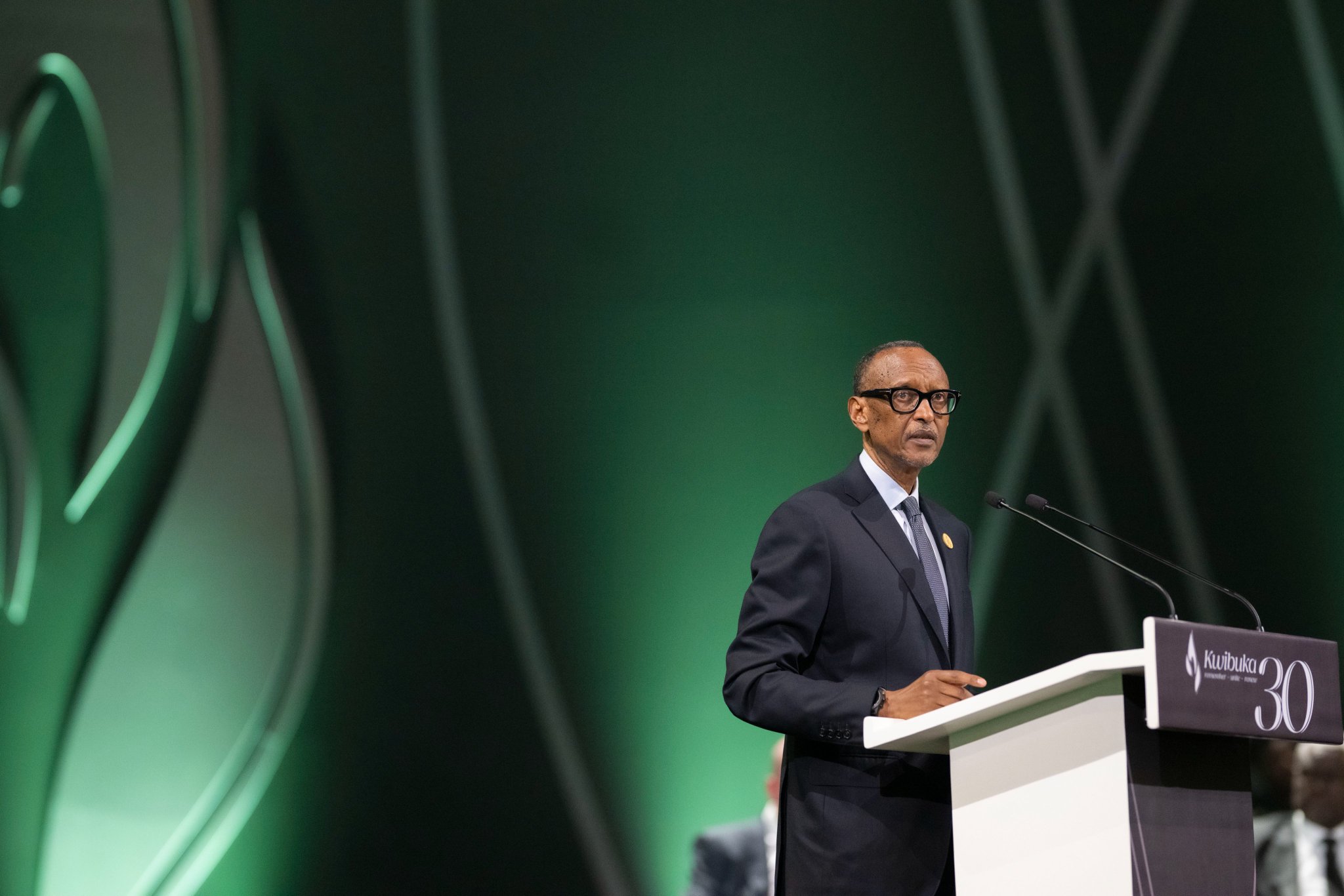
On Sunday, Rwanda paid solemn tribute to genocide victims. In accordance with tradition, the country’s President Paul Kagame ignited a memorial flame at the Kigali Genocide Memorial, where more than 250,000 victims are thought to be buried, to mark the start of the commemoration ceremonies on April 7 — the day Hutu militants launched the horror massacre against Tutsis in 1994.
Kagame, together with several other African leaders and other foreign guests, laid wreaths on the mass graves.
The president also delivered a speech at a 10,000-seat arena in the capital, saying that the international community had “failed all of us” during the genocide.
“Rwanda was completely humbled by the magnitude of our loss. And the lessons we learned are engraved in blood. […] It was the international community which failed all of us, whether from contempt or cowardice,” Kagame said in Kigali during the commemoration ceremony.
But what caused this tragedy, and could it have been prevented?
Causes of Genocide and Its Beginning
The causes of the genocide were based on the policies of the German and then Belgian colonial rulers, who sought to maintain their power in Rwanda by exacerbating internal contradictions. Belgium initially supported the Tutsi monarchy, then made concessions to the majority Hutus. As a result, in Rwanda, with the support of Belgium, the polarization of the population along ethnic groups finally took shape, and ethnically oriented political parties were formed.
The trigger for the start of the genocide against the Tutsi was the death of ethnic Hutu Rwandan president Juvenal Habyarimana, whose plane was shot down by a missile on April 6, 1994. Hutu leaders blamed ethnic Tutsis for the murder and began their extermination the next day. In 100 days, more than 800,000 people were brutally killed, according to the most estimates. The vast majority of the victims were Tutsis, but those Hutus who refused to kill their neighbors also suffered a sad fate.
These numbers are mind-boggling: murders occurred at an approximate rate of one every 10 seconds.
The annihilation of the Tutsis was planned over several months: local armed groups were created, mass propaganda was carried out, and machete knives were purchased and distributed to the population. There was no mercy for anyone — neither children nor the elderly, nor pregnant women. People seeking refuge in schools and churches were pelted with grenades and burned alive.
Local and International Response
Surprisingly, the governments of UN member countries were more concerned about the fate of their own troops, according to the UN itself. The Security Council only decided to reduce the size of the already poorly staffed UN Mission in Rwanda.
The UN made these decisions while the force commander of the mission, Romeo Dallaire, saw the atrocities taking place and therefore repeatedly requested logistical support and reinforcements. He also urged to shut down Free Radio and Television of the Thousand Hills, from which the instructions to kill Tutsis were constantly coming.
Despite Dallaire’s efforts, all his requests were left unanswered. Nevertheless, his troops managed to save about 30,000 Tutsis.
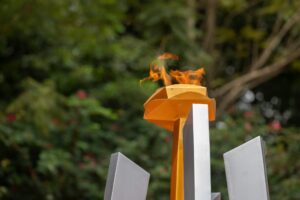
The Flame of Remembrance that was lit, will burn for the next 100 days in commemoration of those lost.
Paul Rusesabagina, who was a hotel manager in the capital Kigali, also made a significant contribution to saving the Tutsis. Using his influence and connections, he was able to shelter 1,268 Tutsis at his hotel.
As for the international community, only on May 17, a month and a half after the massacre began, the UN Security Council decided to send a contingent to Rwanda. The troops arrived at site only at the beginning of August.
However, by then it was all over thanks to the Rwandan Patriotic Front (RPF) led by Kagame. After forcing the 40,000-man Hutu army out of Rwanda, the RPF advanced and took control of the country.
In July 1994, although Kagame de-facto gained supreme power in the country, he chose to announce the creation of a coalition government including both Hutus and Tutsis, as envisaged in the 1993 Arusha peace accords. Pasteur Bizimungu, a representative of the “moderate Hutus” became president, and Kagame himself became vice-president and minister of defense.
It’s worth noting that later, Kofi Annan, who was back then the UN Secretary General, also blamed the global community for the lack of response.
“We must all acknowledge our responsibility for not having done more to prevent or stop the genocide. Neither the United Nations Secretariat, nor the Security Council nor Member States in general, nor the international media, paid enough attention to the gathering signs of disaster. Still less did we take timely action,” Annan said in a speechmarking the 10th anniversary of the genocide.
French Role in the Massacre
In 2021, a special commission led by French historian Vincent Duclert released its report on the role of Paris in events in Rwanda during the period of the Tutsi genocide and on the eve of it.
The report, presented to French President Emmanuel Macron, noted that France did not pay attention to the preparations for the genocide in Rwanda, and in this sense bears significant responsibility for what happened. During a May 2021 visit to Rwanda, Macron formally asked for forgiveness from the people of that country for Paris’s failure to prevent the catastrophe.
In 1994, the International Criminal Tribunal for Rwanda was created in Tanzania under the auspices of the UN to prosecute those responsible for crimes in Rwanda, which existed until December 31, 2015. During its work, the tribunal considered the cases of 93 accused.
One of the criminals, Fulgence Kayishema, a police inspector of the Kivumu commune who ordered the killing of 2,000 Tutsi men, women and children, was recently brought to justice after more than 20 years on the run.
Last June, former Rwandan military police officer Philippe Hategekimana was found guilty of genocide and crimes against humanity by a Paris court and got a life sentence.
Despite the imprisonment of some participants in the genocide, the search for other perpetrators continues. Last summer, Rwanda asked Malawi to help find 55 genocide suspects who are currently hiding in the southern African nation.
Kenya Insights allows guest blogging, if you want to be published on Kenya’s most authoritative and accurate blog, have an expose, news TIPS, story angles, human interest stories, drop us an email on [email protected] or via Telegram
-

 Business4 days ago
Business4 days agoKakuzi Investors Face Massive Loss as Land Commission Drops Bombshell Order to Surrender Quarter of Productive Estate
-
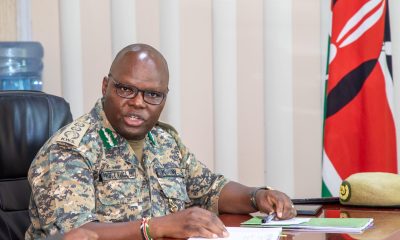
 Investigations5 days ago
Investigations5 days agoINSIDER LEAK REVEALS ROT AT KWS TOP EXECUTIVES
-

 Investigations2 weeks ago
Investigations2 weeks agoPeter Agoro Legal Battles Reveal How EACC Framed a Whistleblower to Protect Corrupt Elites
-
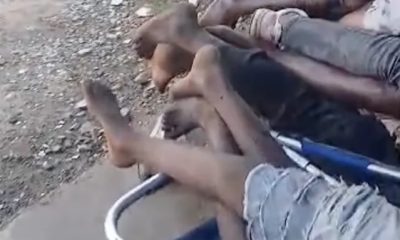
 Investigations2 days ago
Investigations2 days agoCNN Reveals Massive Killings, Secret Graves In Tanzania and Coverup By the Govt
-

 Politics2 weeks ago
Politics2 weeks agoRuto Set to Dominate ODM@20 in Mombasa, Positioning Himself as Raila Odinga’s Political Heir Ahead of 2027
-
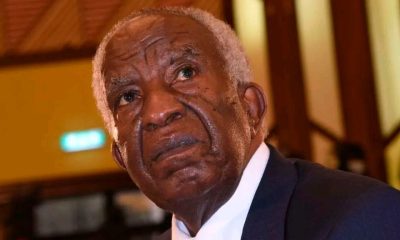
 News5 days ago
News5 days agoEXPOSED: How Tycoon Munga, State Officials, Chinese Firm Stalled A Sh3.9 Trillion Coal Treasure In Kitui
-

 Business4 days ago
Business4 days agoBANKS BETRAYAL: How Equity Bank Allegedly Helped Thieves Loot Sh10 Million From Family’s Savings in Lightning Fast Court Scam
-
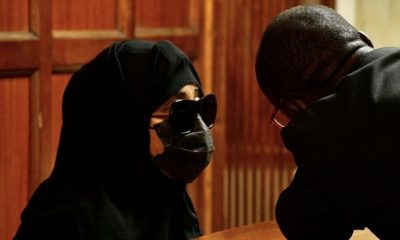
 News5 days ago
News5 days agoEx-Boyfriend Withdraws Explosive Petition to Remove DPP After Criminal Case Against Capital FM Boss Resurfaces


















